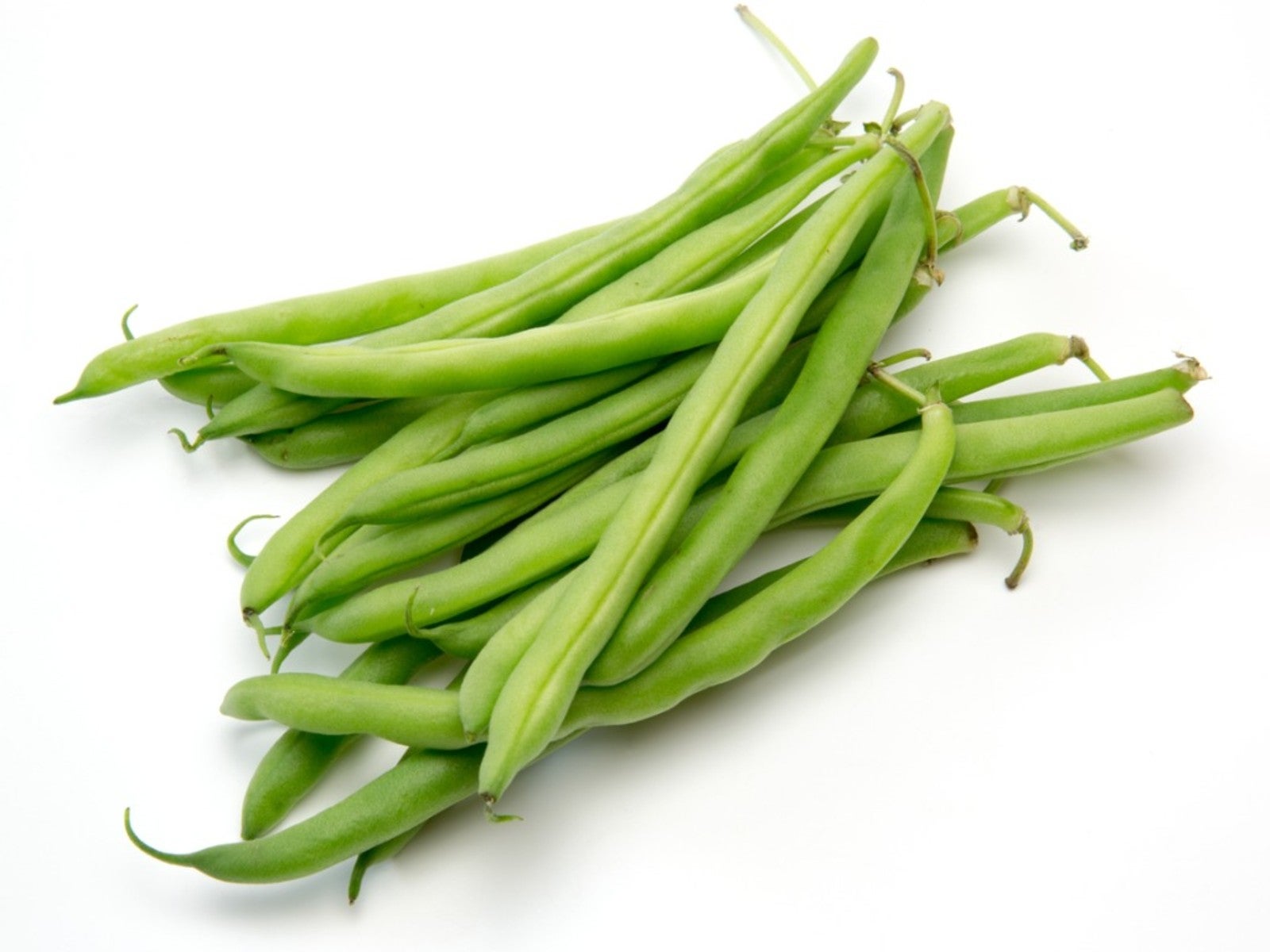Half-Runner Bean Info – Learn About Planting Half-Runner Beans


Do you like the productivity of pole beans but don't have room for a large trellis? Consider planting half-runner beans. This type of green bean has a growth habit somewhere between that of a bush bean and a pole bean.
What are Half-Runner Beans
Like pole beans, half-runner beans will continue to produce blossoms when young beans are removed from the vines. Typically, bush beans produce green beans for about a two week period and need to be successively planted in order to extend the harvest period.
Like bush beans, half-runner beans have a much more compact growth habit. While they do produce runners, the vines only reach lengths of three to five feet (1-1.5 m.) depending upon the variety. Pole beans can send runners as far as 20 feet (6 m.) across the garden. Truly, half-runner beans present the best attributes of both bean types and are the perfect solution for some gardens.
Do Half-Runner Beans Need a Trellis?
While half-runner bean plants don't require trellising, they produce better and are certainly easier to pick when given something to climb. Due to their compact size, half-runner beans can be planted alongside a short garden fence or around a garden stake. Half-runners are ideally suited for companion planting among corn stalks or in the traditional three sister planting of corn, beans, and squash.
Some gardeners prefer planting half-runner beans in rows like bush beans. Space the rows wider apart than when planting bush beans, leaving a minimum of three feet (1 m.) between rows to allow room for harvesting.
Half-Runner Bean Info
- USDA Hardiness Zones: 3 to 9
- PH: 6 to 7
- Days to Maturity: 55 to 60 days
- Sunlight: Full
How to Grow Half-Runner Beans
Sow half-runner beans in the spring after danger of frost has passed and the soil has warmed. Planting beans one inch (2.5 cm.) deep is recommended. When sowing in rows without support, sow seeds two to four inches (5-10 cm.) apart and thin to six inches (15 cm.) to allow for horizontal growth. Sowing a new row every two to three weeks can extend the harvest and provide beans throughout the growing season.
Gardeners can expect germination within two weeks. Soaking seeds prior to sowing can reduce germination times. When trellising, put supports in place prior to planting. Place the bean seeds close to the trellis. If you find you've planted the seeds too far from the support, simply direct the young seedlings toward the trellis. Hook a leaf onto the support or gently wrap the runner around the pole.
Gardening tips, videos, info and more delivered right to your inbox!
Sign up for the Gardening Know How newsletter today and receive a free copy of our e-book "How to Grow Delicious Tomatoes".
Water beans when planting and when the soil begins to dry. Green beans prefer a moist but not soggy growing medium. Mulch to control weeds and periodically use a low nitrogen fertilizer, particularly if the beans are slow to flower and produce. Popular heirloom varieties include Mountaineer White and State half-runner.

Laura Miller has been gardening all her life. Holding a degree in Biology, Nutrition, and Agriculture, Laura's area of expertise is vegetables, herbs, and all things edible. She lives in Ohio.
-
 8 Perfect Flowers To Plant With Tomatoes To Boost Yields & Banish Pests
8 Perfect Flowers To Plant With Tomatoes To Boost Yields & Banish PestsDon’t forget flowers when choosing companion plants for your tomato beds or pots. These pretty, fragrant blooms add beauty but are also highly beneficial.
By Mary Ellen Ellis
-
 Want The Longest Lasting Hydrangea Flowers? Grow These 8 Panicle Hydrangea Varieties
Want The Longest Lasting Hydrangea Flowers? Grow These 8 Panicle Hydrangea VarietiesFor ornamental shrubs that deliver the longest flowering seasons with plush blooms and delicate hues, these panicle hydrangea varieties are essential in your yard
By Tonya Barnett